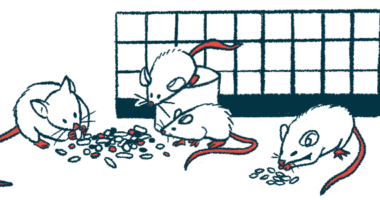Less Common SIRT6 Mutation Linked to Better Health in FA Patient Study
Researchers find mutations were associated with neurological symptom severity

A mutation in the gene SIRT6 is associated with less severe neurological symptoms and visual impairment among people with Friedreich’s ataxia, a new study reports.
“We have identified a [mutation] in SIRT6 as a potential modifier of [Friedreich’s ataxia] neurological features,” researchers wrote. “The less common CT genotype [genetic makeup] of SIRT6 is linked to better neurological and visual health in patients.”
The study, “A non-synonymous single nucleotide polymorphism in SIRT6 predicts neurological severity in Friedreich ataxia,” was published in the journal Frontiers in Molecular Biosciences.
Friedreich’s ataxia is caused by mutations in the FXN gene, which provides instructions for making a protein called frataxin. Most ataxia-causing FXN mutations don’t change the sequence of the part of the gene that codes for the protein, however. Disease-causing mutations instead affect the biochemical processes that control how the gene is “read,” referred to as epigenetics.
Study measured disease severity in patients with different variants
In this study, a team led by scientists in the U.S. tested the idea that, since epigenetics play such a central role in Friedreich’s ataxia, genetic differences that affect epigenetic profiles could alter the severity of the disease.
In an initial screen, the researchers conducted statistical analyses to assess the association between documented mutations in several epigenetics-related genes, and measures of disease severity in 88 people diagnosed with Friedreich’s ataxia. Results indicated a potential association with a mutation in the gene SIRT6, which the researchers further analyzed.
The SIRT6 gene provides instructions for making a sirtuin, an epigenetic protein that regulates genetic activity by removing chemical alterations called acetyl groups. Everyone inherits two copies of the SIRT6 gene, one from each biological parent.
At a particular location called rs352493, most versions of the SIRT6 gene have a nucleic acid (one of the “letters” of the genetic code) called thymine (T). More rarely, this location can house a different nucleic acid called cytosine (C). This type of genetic mutation is called a single nucleotide polymorphism or SNP.
In an analysis of data for 569 people with Friedreich’s ataxia, 89% were homozygous for the more common variant — they had a “T” at the rs352493 location in both copies of the SIRT6 gene, referred to as “TT”. Another 10% of patients had a “T” in one copy, while the other copy held a “C” at this location, referred to as “CT.” Two patients carried a “C” in both copies and were not included in subsequent analyses.
Analyses of disease severity, assessed via modified Friedreich Ataxia Rating Scale (mFARS) scores, showed a marked difference between the TT and CT groups. In patients with the rarer CT genotype, mFARS scores generally plateaued after about 15 years of disease duration, whereas in the TT group, scores continued to increase (worsen). Consequently, scores were significantly worse in the TT patients later in their disease course.
Including the SIRT6 genotype significantly improved the accuracy of statistical models predicting mFARS scores. Variations at this gene also were predictive of other measures of disability, such as the 9-hole peg test and timed 25-foot walk, in statistical models.
“The SIRT6 genotype improves predictions of disease features in those with [Friedreich’s ataxia] by a modest (2–5%) but significant amount,” the researchers wrote.
Mutations in this gene showed a significant association with measures of vision, but not heart disease, scoliosis (a sideways curvature of the spine), or diabetes.
“The SIRT6 SNP genotype predicts neurological outcomes in [Friedreich’s ataxia], and the CT genotype is associated with better neurological function over time,” the researchers concluded.
Additional cell experiments showed that this SNP in SIRT6 does not alter the biochemical function of the gene, nor does it affect the expression of the FXN gene. However, analyses showed that cells harboring this mutation showed marked alterations in the transcriptome — a global view of which genes are being “read.”
The data “provides some indication of differences in downstream pathways that may be relevant to [Friedreich’s ataxia], but they do not identify a detailed mechanism,” the researchers wrote, adding, “future studies should focus on specific pathways implicated in the transcriptomic data to determine if the mechanism(s) of this potential modifier is a novel therapeutic target for [Friedreich’s ataxia].”








